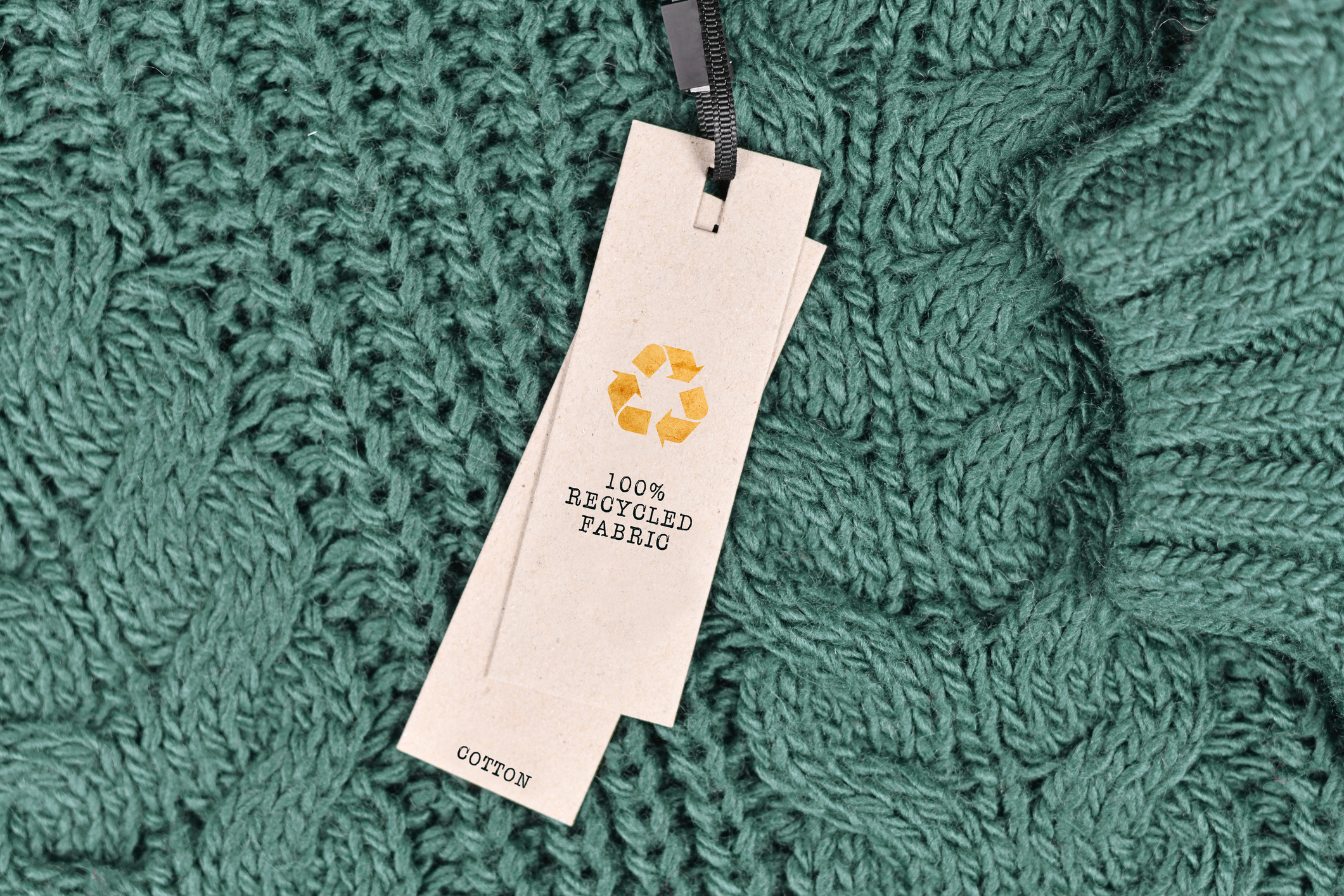The fashion industry is one of the world’s biggest polluters, as clothing is constantly thrown away for waste, heightening the impact of carbon emissions on the environment. The rise of sustainable fashion has proved to be an appropriate competitor to impeding the effects of fast fashion.
Many fashion brands are moving towards sustainable fashion to alleviate the impacts of fast fashion on the environment. Fashion brands are adopting several initiatives to ensure that they do their part in helping the fashion industry.
Sustainable fashion is a fantastic way to help preserve the environment whilst staying on trend. At Loofes, we’re here to educate you on sustainable fashion and its environmental importance.
Table of contents
- What is sustainable fashion?
- Why is sustainable fashion important?
- Circular economy
- Ethical practice
- Fast vs slow fashion
- Opt for sustainable fashion with Loofes
What is sustainable fashion?
Sustainable fashion is defined as the principle that clothing and accessories are made without negatively affecting the environment. When creating garments, brands often use upcycled and recycled materials, such as leather and organic cotton.
When it comes to sustainable practices, clothing brands may follow one or more of the following processes for their clothing to be considered sustainable.
Ethical fashion
Men’s and women’s clothing produced in an environment engaged with the social issues surrounding the fashion industry is known as ethical.
Whereas sustainable fashion focuses on the environment, ethical fashion emphasises the morals a company upholds to ensure no person or animal is hurt during manufacturing. The Rana Plaza collapse heightened the need for ethical fashion, as workers’ harsh conditions were recognised worldwide.
Some issues that are expected to be addressed by fashion companies are:
- Access to a living wage
- Health and safety
- Human rights
- Suitable working conditions and hours
Upholding these ethical practices are the first step towards clothing companies creating sustainable fashion.
Circular fashion
The term circular fashion first appeared at a seminar in Sweden, highlighting the new main focus of the circular approach to the fashion industry. Fashion brands are becoming more accountable with their garments by adopting circular fashion.
Circular fashion is the notion that all materials used are circulated for as long as possible in an effective and environmentally friendly manner. Circular fashion is designed to cut out waste and reduce pollution.
This can be achieved by using fewer materials when producing items to increase the product’s recyclability or by returning any unavoidable waste to nature safely.
Slow fashion
A direct reply to the detrimental impact of fast fashion, slow fashion considers the process of making clothing and advocates buying longer-lasting, high-quality garments. Slow fashion has become increasingly popular over recent years as more people are becoming aware of the effects of fast fashion.
Focused on the reduction of production and consumption primarily, slow fashion is environmentally friendly whilst upholding morals and managing social issues. Slow fashion moves away from on-trend clothing towards apparel made from high-quality and sustainable materials.
Conscious fashion
Conscious fashion is defined as apparel that is produced following the triple bottom line to prioritise the planet’s sustainability and the company’s bottom line. Conscious fashion is seen as an alternative to fast fashion, as sustainability and using less and higher quality materials are prioritised.
Why is sustainable fashion important?
Sustainable fashion significantly reduces the impact on the environment in several ways. Moreover, sustainable fashion is crucial for ensuring healthy and safe work environments.
Reducing carbon emissions by using natural or recycled materials, sustainable fashion saves natural resources in the process. Approximately 97% of materials are new when producing clothes, whereas sustainable fashion recycles and reuses materials to reduce the use of natural resources.
Creating more sustainable fashion drastically improves working conditions, as companies have a moral obligation to deal with pressing social issues. Companies are also expected to move towards sustainable fashion to prevent animals from being harmed.
Sustainable fashion is also crucial for reducing water consumption. Fast fashion is responsible for 20% of global water pollution – it takes 2,700 litres of water to produce one cotton t-shirt. Reusing materials saves water, leading to a reduction in global water pollution.
Circular economy
In the current economy, the process of making clothes is very linear. Materials are taken from the Earth to make products, which are eventually thrown away as waste. Linear fashion is often seen in fast fashion, where the notion of recycling and reusing clothing is absent.
The process of a circular economy is, by contrast, non-linear. A circular economy stops waste from being produced by recycling materials and reusing them several times. Circular economies emphasise the importance of repurposing materials to create other garments, extending the product’s lifespan.
This helps to impact the environment positively and is based on three main principles:
- Eliminating waste and pollution
- Circulating products and materials
- Regenerating nature
Circular economies help to tackle several major global issues, such as climate change, pollution and biodiversity loss and ensures all products are returned to the economy and are used more efficiently.
Circular economies entail markets to reuse their products, as there are several benefits that a circular economy can bring. They protect the environment and ensure that natural resources are used more wisely. This can also help develop new sectors and several new jobs.
Ethical practice
Brands must commit to practising ethical and sustainable fashion to uphold the company’s ethical values and win the trust of their consumers. The fashion industry will only become sustainable and ethical when brands manufacture clothes in eco-friendly ways. Brands must also instil basic human rights for their workers, along with a fair wage and good health and safety measures.
Greenwashing
Greenwashing is the deceptive use of marketing to make consumers believe their products are sustainable and eco-friendly. Companies can use greenwashing to divert the public’s attention away from the damage they are doing to the environment. Many brands in the fashion industry are responsible for greenwashing.
Companies often use greenwashing to capitalise on the increasing demand for sustainable products. This can harm their sustainability venture as consumers lose trust in the brand.
To help uphold the goal of sustainability in fashion, there are several things that consumers can do. Buying clothes labelled under the Fair Trade Act is a major step towards sustainable fashion. Doing this will support workers, ensuring all clothes are made in good working conditions.
Buying organic and renewable fibres will reduce waste, as the materials can be recycled. Washing your clothes in cold water and using biodegradable detergent will help to reduce energy consumption and prevent pollution.
Fast vs slow fashion
Over the past few years, the rise of fast fashion has allowed everyone to keep up with the latest trends. Many fashionable garments are available in high street stores, meaning the latest fashion trends can always be found nearby.
Fast fashion is a lot cheaper than slow fashion, however, the effects on the environment are far greater. Fast and slow fashion are different in various ways, but only slow fashion moves towards the goal of sustainability. The table below shows some differences between fast and slow fashion.
| Fast fashion | Slow fashion |
| – Mass-produced and quickly goes to waste | – Made in low volumes and long-lasting |
| – Use petroleum-based materials | – Uses locally sourced materials |
| – Made in workshops or factories in poor conditions | – Uses people from local area |
| – High carbon footprint | – Uses fewer carbon emissions |
| – Low-quality products at low prices | – High quality but more expensive |
| – Not sustainable as chemicals are used | – Very sustainable |
Slow fashion is a crucial step towards sustainability by reducing pollution and waste, whilst upholding ethical values to protect the company’s workers. Whilst fast fashion may be more popular and on-trend, slow fashion is the key towards sustainable fashion.
Opt for sustainable fashion with Loofes
Ethical and sustainable fashion is a concept that all leading companies should embed into the main objectives of their business. Companies should practice sustainability and encourage other brands to follow this concept.
In the current landscape, ethical and sustainable fashion will become a concept that most of the fashion industry will practice.Why not start making your wardrobe more sustainable by browsing the latest range of sustainable men’s and women’s clothing at Levi’s, Tommy Hilfiger, Napapijri and Diesel – all of whom are dedicated to creating a more sustainable future?







